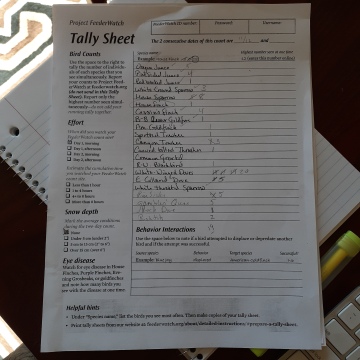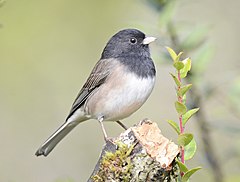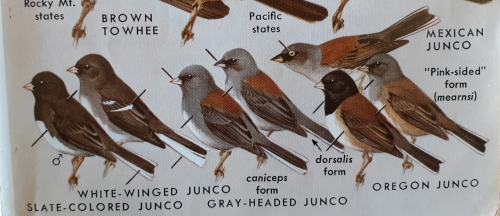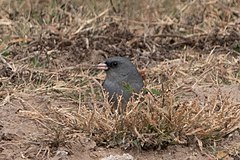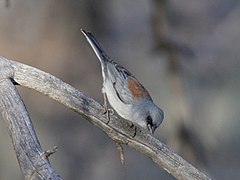Since the snowstorm the activity at our feeders has increased, and we suddenly have bird strikes.
We had a few when we first got here. So, I put up our lone remaining uv sticker in the middle of the window, which worked… I think because the window was open most of the time so the expanse was opened up.
The day after the snowstorm I noticed some gray feathers and thought shoot!
Window Strike!
Yesterday, I was napping with the cats (It’s been that kind of week) and heard two thunks… I struggled to untangle myself from the Soph and blanket, found my glasses and… Shit!
Two new window strikes! The white winged doves! The ghostly remnants of their impact on the window. Damn!
Looked for downed birds…
Major Bird Threats – Cats & Windows
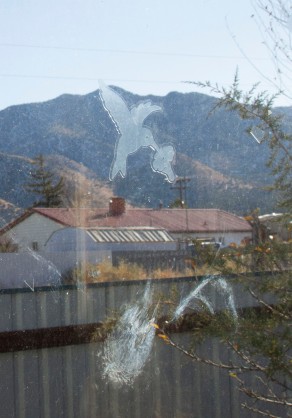 Window Strikes and Cat predation are major threats to birds, and two of the few things I have control over – at least in my own home. I feel strongly that if you feed them, you need to protect them. Our Soph and Sass are both indoor cats and I chase off the gray cat (Big-Ears) and the black cats (the Twins) that try to hunt in our yards. I even threw rocks at Big-Ears when he was in one of the trees, although I didn’t come anywhere near him, I did startle him and he hasn’t been up since.
Window Strikes and Cat predation are major threats to birds, and two of the few things I have control over – at least in my own home. I feel strongly that if you feed them, you need to protect them. Our Soph and Sass are both indoor cats and I chase off the gray cat (Big-Ears) and the black cats (the Twins) that try to hunt in our yards. I even threw rocks at Big-Ears when he was in one of the trees, although I didn’t come anywhere near him, I did startle him and he hasn’t been up since.
The white winged doves like the side yard, which is only about 8 ft wide. Their numbers have increased sine the snowstorm. Yesterday something startled them and in the mass panic two hit the window.
I know my single uv sticker was like trying to use a finger to fix the dyke, but I was hopeful.
The Challenges of living in Magdalena, NM
It isn’t always easy to find things in Magdalena/Socorro. The bookstore at the Bosque del Apache had supplies but this is Festival of the Cranes week and I just couldn’t stomach fighting the traffic (I had the car) and trying to get in and out and meet up with R in time for us to have dinner and shlep out with the Star Party.
Oh, and Amazon two-day shipping doesn’t exist here. It was an interesting exercise to change my location – not only lost 2-day shipping but also lost the ability to even order some things. Now I knew I was no longer in Portland.
My quick and dirty solution wasn’t elegant. I took the paper the uv stickers were attached to and started cutting up the remaining area. Not pretty – but my hope is it will buy me a week or so while I track down the best option.
Preventing Window Strikes
A little research shows that there can not be more than 2-3″ between stickers – and etched glass, one way glass (that isn’t mirrored) or refitting the windows to look slightly down – show they show ground not sky – are probably the best. Audubon has an exhaustive list of things you can try, and CollideEscape has an amazing array of options to alter you windows.
Altering the windows permanently isn’t possible since we are renting, so I went for what I had on hand.
DIY Window Strike Prevention
I took the remnants of the uv stickers that I saved (I’m learning not to throw things out, please don’t let me become a hoarder) cut them up and we’ll see. You can just see the UV scraps and stripes.
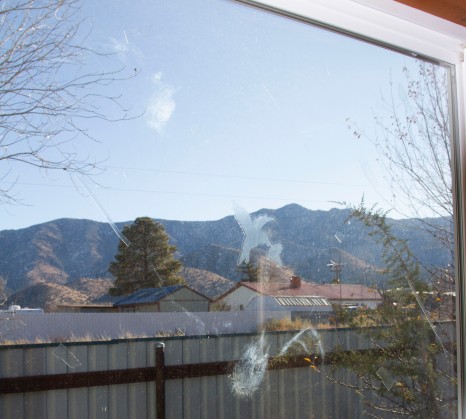
Not the most elegant solution, but hoping it is enough to keep the strikes down until I can get supplies and do something better.
If anyone has used any products they love, esp. of they are temporary, please let me know.
~ Tess
Note: I started this post last week – fiddled with the stickers for a few days and have had 2 strike free days!

